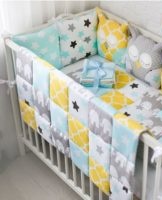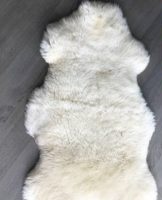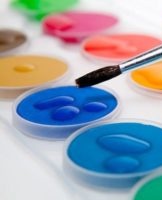Instructions for use of "Whiteness", composition, characteristics and instructions for use
Although every year on the household shelves of stores appear new preparations that lighten fabrics and eliminate yellowness, many women prefer, as before, to use "Whiteness", the hostess knows the instructions for use by heart. Inexpensive product washes and sanitizes dirty dishes, removes oil and grease stains from laundry and clothing, cleans and sanitizes tiles.
Composition and form of release
Bleach, which has antiseptic properties, is produced by the chemical industry in the form of liquid, tablets and gel. Sodium hypochlorite is the active component of the universal remedy used in everyday life. The substance acts as an oxidizing agent and is soluble in water.
"White" is used for washing and disinfecting dishes and tables in the kitchen, in medical institutions it is used as an antiseptic. The product contains up to 8% chlorine, in the liquid its concentration gradually decreases. In addition to the active ingredient, "Whiteness" contains caustic soda, which softens water. Substances that improve the washing effect are also added to the liquid.
Relatively recently, "Whiteness" began to be produced in the form of a gel, which, in addition to sodium hypochlorite, contains:
- thickeners;
- solvents;
- fragrant odorants.
The product is packaged in plastic bottles, resists rust, dirt and germs on the plumbing.
Water-soluble tablets wash and disinfect floors, walls, eliminate yellowing of clothes.
Application and Features
The universal product gives a white tint to yellowed cotton and linen fabrics, tulle curtains, but it is not suitable for colored linen, since chlorine eats away paint, as well as stains.
Bleach kills mold on walls, ceilings, plaster, drywall and in the washing machine.
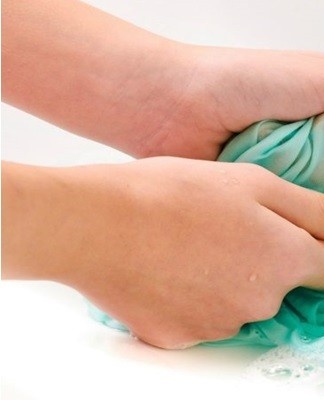
The product washes and eliminates germs from bathtubs, toilets, birdcages, aquariums, tiles. “Whiteness” is used:
- to remove stains from fabrics;
- for water purification and disinfection;
- for disinfecting dishes.
The product does not lose its effectiveness at low temperatures, does not leave streaks, whitens fabrics without boiling. The disadvantage of the chemical is a short shelf life, active chlorine evaporates.
Terms of use
The whitening liquid has a pungent smell that irritates the eyes and respiratory tract, but it effectively removes stains by destroying their molecules through oxidation, and if you do not know how to use it correctly, it is easy to spoil the product. to work with "Whiteness", you need to remove superfluous objects so that drops of aggressive liquid do not fall on them. Hands should be protected with gloves. Be sure to follow the dosage indicated in the bleach instructions.
It is strictly forbidden to mix "Whiteness" with other similar agents, since it is easy to poison yourself with the toxic composition.
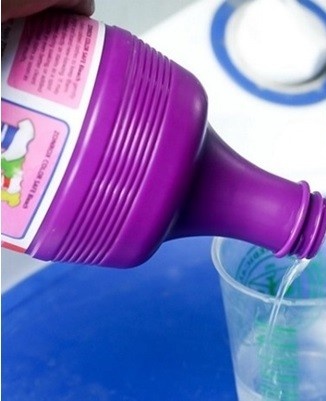
It is necessary to store household chemicals in a dry, warm room, the liquid should not be frozen, as it loses its effectiveness. The solution from an opened vial should be consumed within six months.
Use of disinfectant properties
The bleaching agent destroys fungi and bacteria, as well as more expensive compounds, it is used to disinfect houses and apartments.
Kitchen, laundry and technical rooms
Chlorine is resistant to all pathogenic microorganisms. "Whiteness" wash floors, walls covered with tiles. For disinfection, 5 capfuls of liquid are poured into a bucket of water. First, the surfaces are rinsed to remove dust, after which they are wiped with a cloth or sponge soaked in the prepared composition, rinsed with plenty of water.
School rooms, foyers and hallways
To prevent the spread of infectious diseases, wet cleaning and disinfection of floors and walls in classrooms and public places are carried out daily in educational institutions. In the list of antiseptics approved for use in schools, there is “Whiteness”.For disinfection of corridors and foyers, 20 ml of a liquid agent with chlorine is dissolved in 10 liters of water.
Medical premises
In hospital and clinic offices, viruses and bacteria are killed by ultraviolet rays. For disinfection of corridors, toilets, sinks, it is recommended to use not bleach, but “Whiteness”, 30 ml of which is dissolved in 10 liters of water. With this composition they wash floors, wash bathrobes.
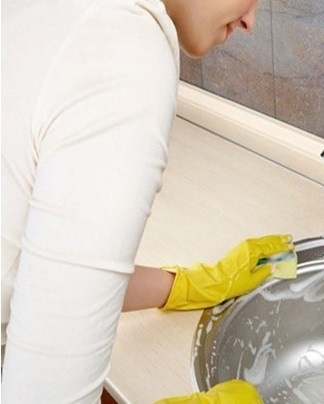
Routine cleaning of plumbing fixtures, bathrooms
To clean pipes and faucets from blockages, disinfect sinks, toilets, remove a specific smell, pour a liter of bleach, cover and leave overnight. Bathroom tiles are wiped with a sponge dipped in a solution prepared from 5 capfuls of the product and a bucket of water.
Home disinfection
Germs and viruses are brought into an apartment from the street, from a store or office, through contact with an infected person.
after illness
If a child brought back chickenpox or rubella from kindergarten, one of the family members caught the flu, not only the floors should be washed with bleach, laundry, surface treatment, but also dishes. Pour a liter of hot water into a large plastic bowl and add 10 ml of "Whiteness", fold the cutlery, plates, cups so that the liquid covers their surface, and leave to stand for an hour.
The dishes are rearranged in another container filled with cooled boiling water, cleaned with a brush or sponge, then rinsed with clean water up to 5 times. Toys and other objects used by the patient are disinfected.
Cages, aviaries
In the country and at dachas, rabbits and ducks are raised, chickens are bred on poultry farms. At least two or three times a year, it is necessary to treat with bleach, or better with "White" cells, for this they are rid of animals:
- The composition is sprayed on the surfaces and corners.
- After a day, everything is thoroughly rinsed with water from a pressure hose.
- After drying, the cells release the inhabitants.

The aviaries are disinfected with a solution; for its preparation, a glass of bleach is combined with 5 liters of water. They begin the transformation by relocating the chickens.
Clean aquariums
In families with children there are rabbits, dogs, guinea pigs and cats. Children love bright fish, but on the glass walls and in the floor of the aquarium, microorganisms accumulate during the rotting of algae, causing dangerous diseases in its inhabitants.
For disinfection, a bucket of warm water is poured into the container. Add a bottle of "Whiteness", place houses, driftwood and other decor. After 4 or 5 hours, clean and rinse all parts. The composition is sprayed on the glass, which is thoroughly washed off after some time.
How to use the "Whiteness" gel
In recent years, with new household chemicals, they began to produce a well-known agent in a different, less aggressive form, adding an emulsifier and a solvent to the composition.
Gel evenly distributed over the surface:
- They wash the tiles, the linoleum.
- Plumbing cleaning.
- The wells are disinfected.
- Descale teapots and enamel pots.
"Whiteness" goes on sale in plastic bottles of 500 ml or liter. The gel is well washed off, the smell of chlorine interrupts the fruity aroma.
Instructions for machine and hand washing
Before bleaching towels, linen, t-shirts, you need to take stained fabrics to another place so that drops of sodium hypochlorite do not fall on them. A spoonful of the product should be diluted in 3.5 liters of heated water, mixed with soapy water. Place the elements in the composition for a quarter of an hour, then rinse several times.

Whiteness for washing is used only when the machine has an inscription on the permission to use bleach. Before work, the drum is wiped with a composition, and if no reaction follows, place the damp cloth:
- Dissolve the liquid in the dosage indicated in the instructions.
- Set the prewash mode.
- Select the main cycle program with rinsing.
The quantity of product depends on the volume of products to be bleached. For a small load, 50 ml of sodium hypochlorite is enough. Put the powder last.
How to use it correctly to clean the well
Drinking water acquires an unpleasant smell, loses its usual taste, which is due to the fact that during floods, along with dust and dirt, pathogenic microorganisms enter the well. For disinfection and chlorination:
- Pumping liquid
- Remove the plaque from the walls with a brush.
- Three glasses of "Whiteness" are mixed with a bucket of water.
- The inner and outer parts of the well are treated with the prepared composition.
After cleaning, it is filled and sodium hypochlorite is poured in, the amount is calculated taking into account the rings, a liter of bleach is taken as one. The head is covered with a film, which is removed after 10 hours. Water is pumped out of the well until the smell disappears.
Precautionary measures
Although "Whiteness" contains no more than 8% active chlorine, if the instructions are not followed, the aggressive liquid not only damages tissues, but also negatively affects a person.
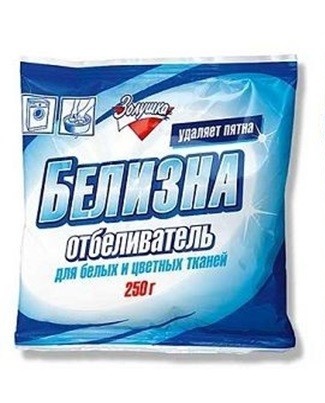
Good ventilation
The strong smell of bleach irritates the respiratory tract. In the room where "Whiteness" is used, there must be ventilation, otherwise you can poison yourself with fumes.
After washing or disinfecting the dishes, washing the floors, you have to open the windows to let in the fresh air.
Skin, mouth, eye protection
It is necessary to work with "Whiteness" in rubber gloves so as not to burn your hands with aggressive liquid. The bottle with the chemical should be hidden from children so that the little ones do not taste it and hurt the skin. If a drop of "Whiteness" from the composition accidentally falls on the conjunctiva, the eye is washed with water and sent to a doctor for help.
No smoking, food during disinfection
Chlorine poisoning causes severe symptoms. Compounds of this microelement can enter the body when disinfecting premises, washing dishes with "Whiteness". When using household chemicals, you should not smoke or eat.
Storage rules
Toxic agents must be hidden from children. Bottles of sodium hypochlorite should be kept dry, away from batteries and heaters. You can not leave "Whiteness" on the balcony or loggia, when it freezes, the antiseptic loses its properties.
What things can not be washed
The chlorine-containing agent is used to remove stains from denim and linen fabrics, to remove yellowness from tulles, towels and for washing bed linen, T-shirts and cotton T-shirts.
"Whiteness" is not suitable for colored, woolen and synthetic fabrics.
What surfaces cannot be used
Chlorine oxidizes metal objects, but does not corrode plastic and enamel objects. "Whiteness" can be used to clean wood and tile surfaces, but you cannot use a laminate cleaner.

